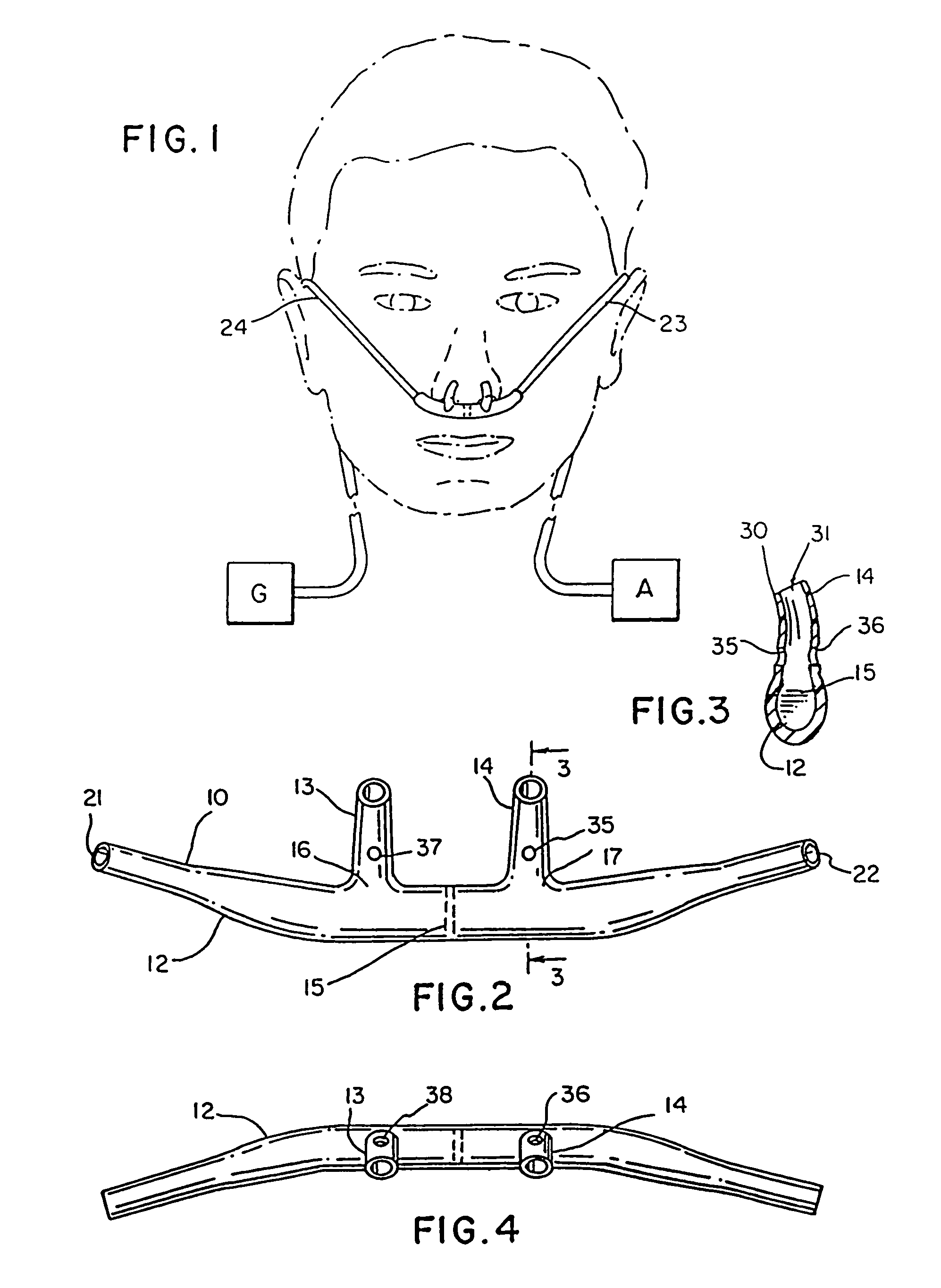Nasal cannula for acquiring breathing information
a technology of breathing information and cannula, which is applied in the field of cannula, can solve the problems of affecting the reading of end-tidal carbon dioxide, affecting the operation of the valve, so as to reduce or eliminate the incidence of occlusion of the tip
- Summary
- Abstract
- Description
- Claims
- Application Information
AI Technical Summary
Benefits of technology
Problems solved by technology
Method used
Image
Examples
Embodiment Construction
[0017]FIG. 1 is a frontal view of a normally positioned nasal cannula on a patient (shown in phantom) connected to a gas source (G) and a gas analyzer (A);
[0018]FIG. 2 is a rear view of the cannulae face piece shown in FIG. 1;
[0019]FIG. 3 is a partial cross section of a nare of the nasal cannula taken along the lines and arrows 3-3 of FIG. 2;
[0020]FIG. 4 is a top plan view of the nasal cannula of FIG. 2;
[0021]FIG. 5 is a diagrammatic view of a nasal cannula for connection to detection equipment to facilitate monitoring of breathing characteristics of a patient;
[0022]FIG. 6 is a diagrammatic view of a nasal cannula, with a mouthpiece, for connection to detection equipment to facilitate monitoring of breathing characteristics of a patient;
[0023]FIG. 7 is a diagrammatic view of a nasal cannula, with a mouthpiece but without any secondary openings in the nares, for connection to detection equipment to facilitate monitoring of breathing characteristics of a patient;
[0024]FIG. 8 is a diag...
PUM
 Login to View More
Login to View More Abstract
Description
Claims
Application Information
 Login to View More
Login to View More - R&D
- Intellectual Property
- Life Sciences
- Materials
- Tech Scout
- Unparalleled Data Quality
- Higher Quality Content
- 60% Fewer Hallucinations
Browse by: Latest US Patents, China's latest patents, Technical Efficacy Thesaurus, Application Domain, Technology Topic, Popular Technical Reports.
© 2025 PatSnap. All rights reserved.Legal|Privacy policy|Modern Slavery Act Transparency Statement|Sitemap|About US| Contact US: help@patsnap.com



